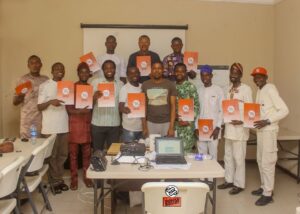We AATSG demand to know the whereabouts of the development in 137 South-Western LGAs that amounts to N659.51 billion in just one year.
By – Abayomi Odunowo
In Nigeria, the Federation Account Allocation Committee (FAAC) plays a crucial role in the distribution of revenue among the three tiers of government – federal, state, and local. The main criteria for sharing FAAC allocations to local governments are designed to ensure fairness and equity in the distribution of resources.
First and foremost, the principle of equality is upheld in the allocation process. A certain percentage of the revenue is shared equally among the 774 local government areas in Nigeria. This ensures that each local government receives a base amount of funding to support its activities and provide essential services to its residents.
Population size also plays a significant role in determining the allocation of funds to local governments. A percentage of the revenue is allocated based on the population of each local government area. This criteria recognizes the varying needs of different communities based on their size and ensures that resources are distributed in proportion to the number of people they serve.
Another important factor considered in the allocation process is the enrollment of students in primary schools. A percentage of the revenue is allocated based on the number of primary school students in each local government area. This ensures that funds are directed towards education, which is vital for the development of human capital and the future prosperity of the nation.
Internally Generated Revenue (IGR) is also taken into account when determining the allocation to local governments. A percentage of the revenue is allocated based on the IGR of each local government area. This criteria incentivizes local governments to increase their revenue generation efforts and be more self-sufficient in funding their activities.
In addition to these criteria, a portion of the revenue is set aside for the development of natural resources, as well as for the Federal Capital Territory (FCT) and a stabilization fund. These measures aim to promote economic growth, infrastructure development, and stability in the country.
Overall, the FAAC allocation criteria seek to balance the needs of different local governments, promote equitable distribution of resources, and foster sustainable development across the nation. By taking into account factors such as population size, education enrollment, IGR, and natural resource development, the allocation process aims to ensure that all communities have access to the resources they need to thrive and prosper.
The recent financial update from StatisSense has shed light on the distribution of federal funds among the local government areas in the South-Western states of Nigeria. The data reveals that a total of N659.51 billion was allocated to the 137 council areas in the region over the past year, from June 2023 to May 2024.
Unsurprisingly, Lagos State’s 20 local government areas secured the largest portion of the allocation, receiving a substantial N258.26 billion. This significant amount reflects the state’s status as the economic hub of Nigeria and its high population density.
Following closely behind, Oyo State’s 33 council areas received N127.75 billion, indicating the state’s extensive administrative expenses and population size. Osun State’s 30 local government areas were allocated N87.90 billion, making it the third-highest recipient in the region.
Ogun State’s 20 local government areas received N69.89 billion, showcasing a balanced distribution compared to its neighbouring states. Ondo State and Ekiti State, with 18 and 16 local government areas respectively, received N64.06 billion and N54.66 billion.
The breakdown of these allocations highlights the varying economic needs and administrative capacities of each state in the South-Western region. The data offers a transparent look into the distribution and utilisation of federal resources, providing valuable insights into the financial landscape of the region.
Through StatisSense’s data-driven analysis, stakeholders can better understand how federal funds are allocated across the South-Western states and how they can be effectively utilised to address the economic and social challenges facing the region. By leveraging this information, policymakers and local authorities can make informed decisions to promote sustainable development and economic growth in the region.
Overall, the financial update from StatisSense underscores the importance of transparency and accountability in the allocation of federal funds, enabling stakeholders to track the flow of resources and ensure that they are effectively utilised for the benefit of the entire region.
Otunba Abdulfalil Abayomi Odunowo
National Chairman AATSG
Mobile : +2349053535322.
Follow us on our WhatsApp Channel









